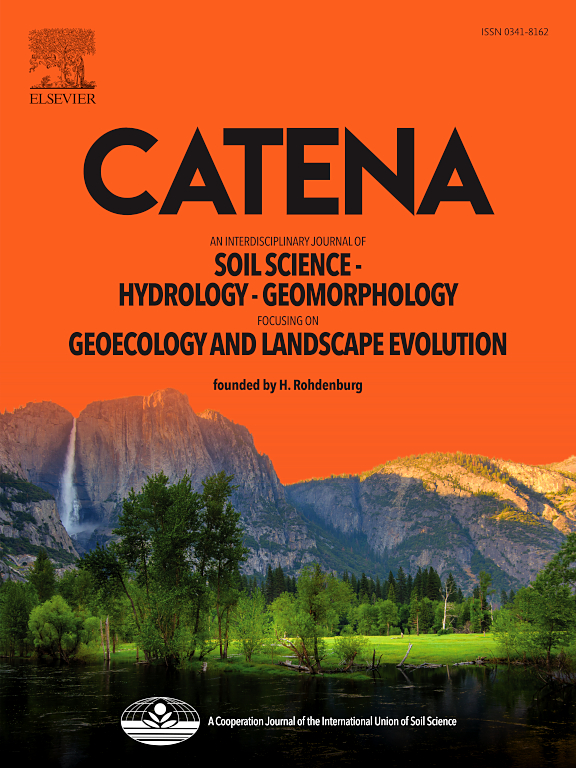2018年白葛湖溃决洪水的水力特征及地貌效应——数百公里干流河段尺度研究
IF 5.7
1区 农林科学
Q1 GEOSCIENCES, MULTIDISCIPLINARY
引用次数: 0
摘要
滑坡湖泊溃决洪水对山地景观的形成具有重要作用,但其对下游地貌的影响尚未得到充分研究。利用水文记录、遥感数据和二维数值模拟等方法,对2018年金沙江上游白葛湖河段进行了研究。虽然早期的研究主要集中在上游100公里,但我们的研究结果揭示了100 - 310公里之间不同的河道变化和沉积物再分配模式。水力阈值——平均峰值剪应力为0.5-0.6 kPa,洪水功率为4-5 kW/m2——划分了侵蚀和沉积为主的河段。下游的能量耗散促进了较宽峡谷的泥沙淤积,与上游狭窄峡谷的强烈侵蚀形成对比。我们还确定了洪水功率和单位水流功率之间的比例关系,为洪水驱动的景观演变提供了新的见解。泥沙记录和水面宽度的年变化突出了泥沙的延迟输运和河道的逐渐恢复,强调了这些事件对地貌的长期影响。这些发现增强了对河流延伸河段的大洪水影响的认识,并为青藏高原东部的灾害评估和水电开发提供了支持。本文章由计算机程序翻译,如有差异,请以英文原文为准。

Hydraulic characteristics and geomorphic effects of the 2018 Baige landslide lake outburst flood: A reach-scale study of the mainstem over hundreds of kilometers
Landslide lake outburst floods play a vital role in shaping mountainous landscapes, yet their downstream geomorphic impacts remain underexplored. This study investigates the 2018 Baige LLOF along the upper Jinsha River using hydrological records, remote sensing data, and two-dimensional numerical modeling. While earlier studies focused on the upper 100 km, our results reveal distinct patterns of channel change and sediment redistribution between 100–310 km. A hydraulic threshold—average peak shear stress of 0.5–0.6 kPa and flood power of 4–5 kW/m2—divides erosion- and deposition-dominated reaches. Energy dissipation downstream promotes sediment deposition in broader valleys, contrasting with intense erosion in confined upstream gorges. We also identify a scaling relationship between flood power and unit stream power, contributing new insights into flood-driven landscape evolution. Sediment records and annual changes in water surface width highlight delayed sediment transport and gradual channel recovery, underscoring the prolonged geomorphic effects of such events. These findings enhance the understanding of large flood impacts over extended fluvial reaches and support hazard assessment and hydropower development in the eastern Tibetan Plateau.
求助全文
通过发布文献求助,成功后即可免费获取论文全文。
去求助
来源期刊

Catena
环境科学-地球科学综合
CiteScore
10.50
自引率
9.70%
发文量
816
审稿时长
54 days
期刊介绍:
Catena publishes papers describing original field and laboratory investigations and reviews on geoecology and landscape evolution with emphasis on interdisciplinary aspects of soil science, hydrology and geomorphology. It aims to disseminate new knowledge and foster better understanding of the physical environment, of evolutionary sequences that have resulted in past and current landscapes, and of the natural processes that are likely to determine the fate of our terrestrial environment.
Papers within any one of the above topics are welcome provided they are of sufficiently wide interest and relevance.
 求助内容:
求助内容: 应助结果提醒方式:
应助结果提醒方式:


